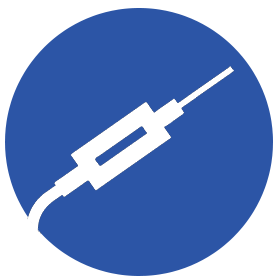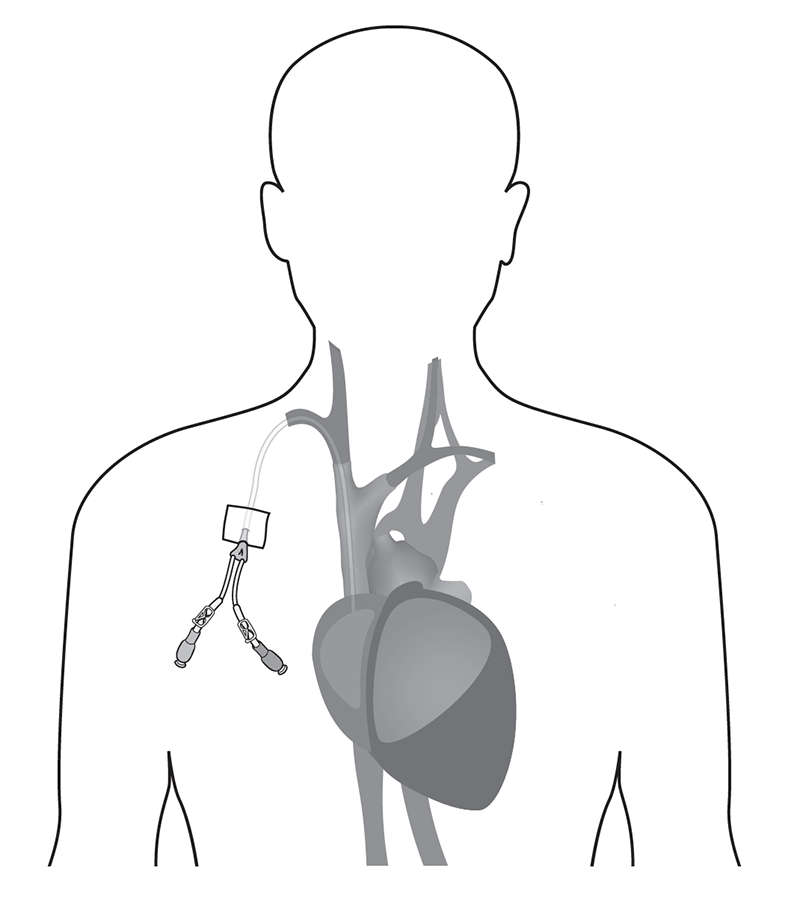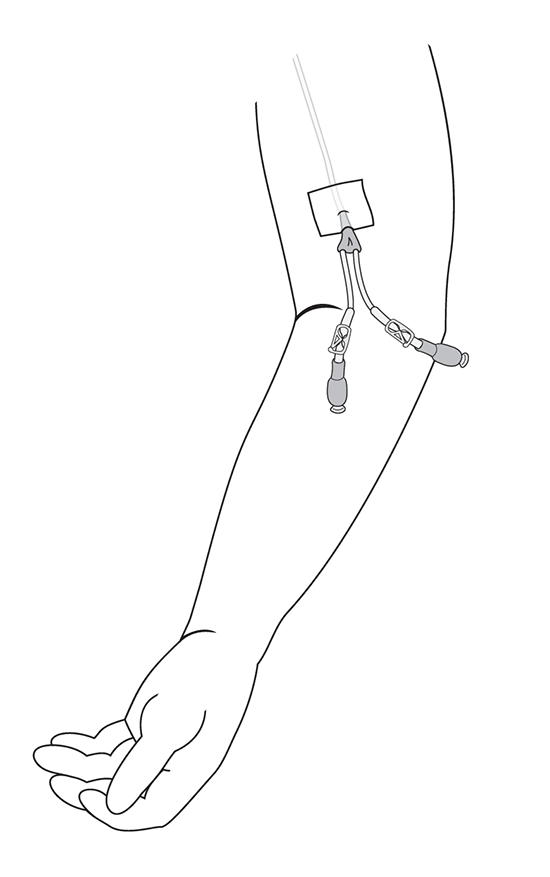How to Manage your Central Venous Access Device
 What is a Central Venous Access Device (CVAD)?
What is a Central Venous Access Device (CVAD)?
- A CVAD is an intravenous line that is put into a large vein in your body and travels to the upper chest
- It can be used to give intravenous medications and chemotherapy and to take blood tests
- Your Central Venous Access Device (CVAD) includes your Hickman or PICC.
Hickman Line:
A Hickman line is inserted in a large vein in your chest and sits usually on the right side of your chest.

PICC (Peripherally Inserted Central Catheter):
A PICC (Peripherally Inserted Central Catheter) is inserted through a vein in your upper arm and travels through the vein into the upper chest.

What do I need to know?
- Keep your CVAD clean and away from dirty surfaces
- Do not let anyone pull or play with your CVAD
- Do not allow pets to lie on your chest or come in contact with your CVAD
When should I ask for help?
Call the Hematology Nursing Site line if:
- You have any redness or pain at the catheter site or along the tunnel
- The catheter comes out or moves position (do not push the catheter back inside)
- You see any yellow fluid or discharge at the catheter site
- You see any bleeding bigger than the size of a dime at the catheter site
What do I do if the CVAD comes out or falls out?
- Make sure the clamp is closed or kink the lines right away
- Put clean gauze on the area or cover with anything clean
- If you are short of breath, lay on your left side and call 911.
- You may have to come into the hospital to have it put back in properly
What to do if your Hickman or PICC leaks or tears?
- Clamp or kink the lines close to the site above the tear
- Call 911
How do you take care of your CVAD?
- If your CVAD is not being used, it must always be clamped and have a special cap on the end
- For the Hickman lines, you will need a dressing on your exit site until it heals. This will help protect the area from infection.
- Your dressing must be clean, dry and stay in place at all times. After it heals you do not need a dressing.
The dressing over your CVAD will have to be changed if:
- It is damp or wet
- It is dirty
- It is not sticking to your skin
- You have pain or discomfort around the device
| Hickman Line | PICC Line | |
|---|---|---|
| Can I bathe or shower with it in? |
• Yes you can shower with your Hickman once it is healed. • The Hickman line should be covered for a shower if there is a dressing on it until it is healed. • Do not submerge your Hickman or exit site in bath water |
• Yes you can shower • Do not put your arm under water • Wrap your arm in a plastic bag/cellophane wrap and tape it to the skin to keep the PICC dry |
| Can I swim with it in? | • No | • No |
| Do I need to have the dressing changed? |
• Yes • Once a week • If the dressing gets wet, loose or dirty. • You do not need a dressing once your sutures are removed |
• Yes • Once a week • If the dressing is gets wet, loose or dirty |
| Does it need to be flushed? |
• Yes • Once a week in each lumen with Normal Saline 10-20mL and then Heparin 300 units |
• Yes • Once a week in each lumen with Normal Saline 10-20mL |
| How do I keep it secured? |
• Secure the Hickman directly to the skin with a piece of tape away from the cap and clamp. • Be careful around small children and pets as they may pull the line |
• Secure the PICC directly to the skin with a piece of tape away from the cap • Be careful around small children and pets as they may pull the line |
| Any other restrictions? | • No heavy lifting or contact sports, for example shoveling snow, playing contact sports (hockey, basketball) | • No heavy lifting, no contact sports, for example shoveling snow, playing contact sports (hockey, basketball) |






